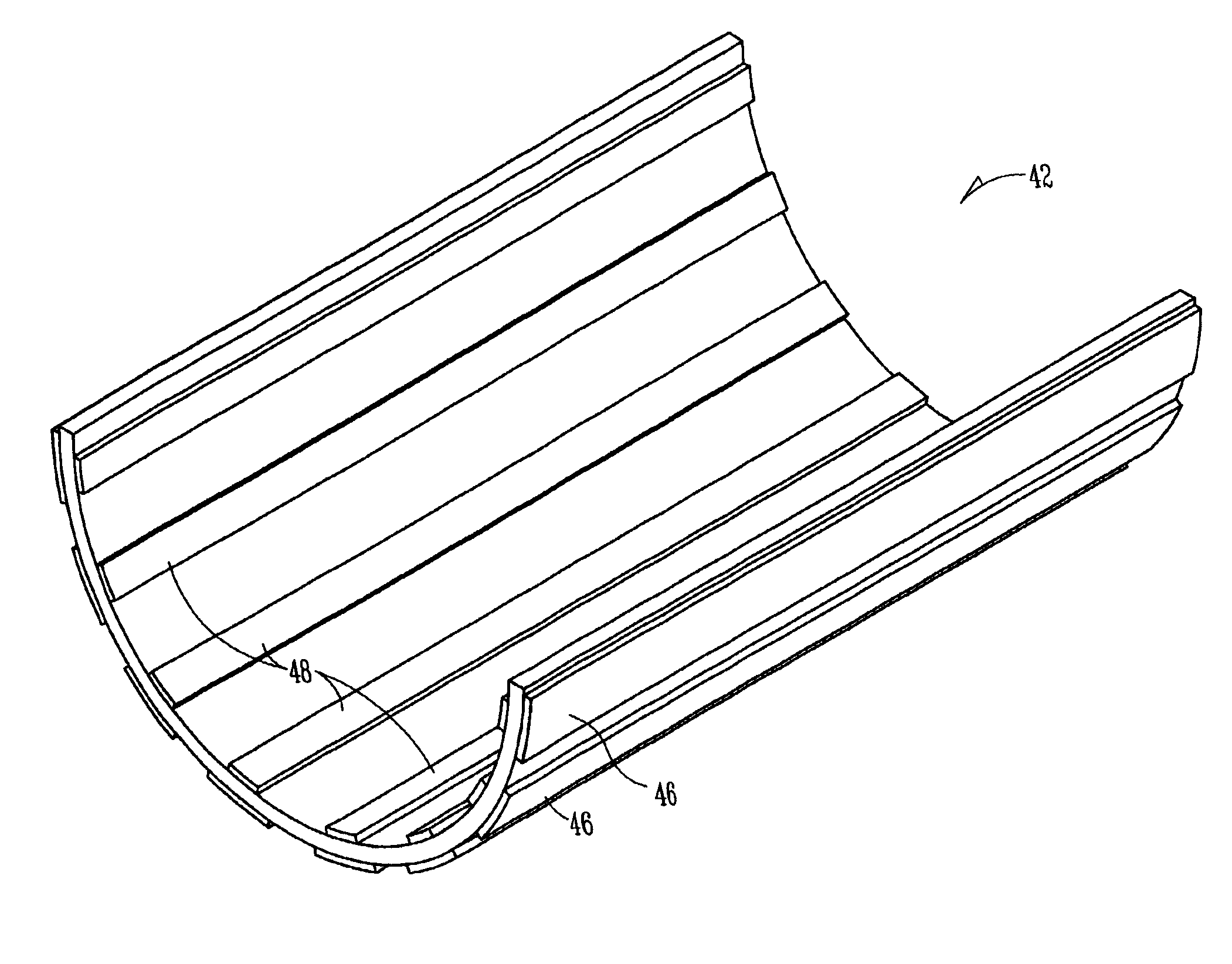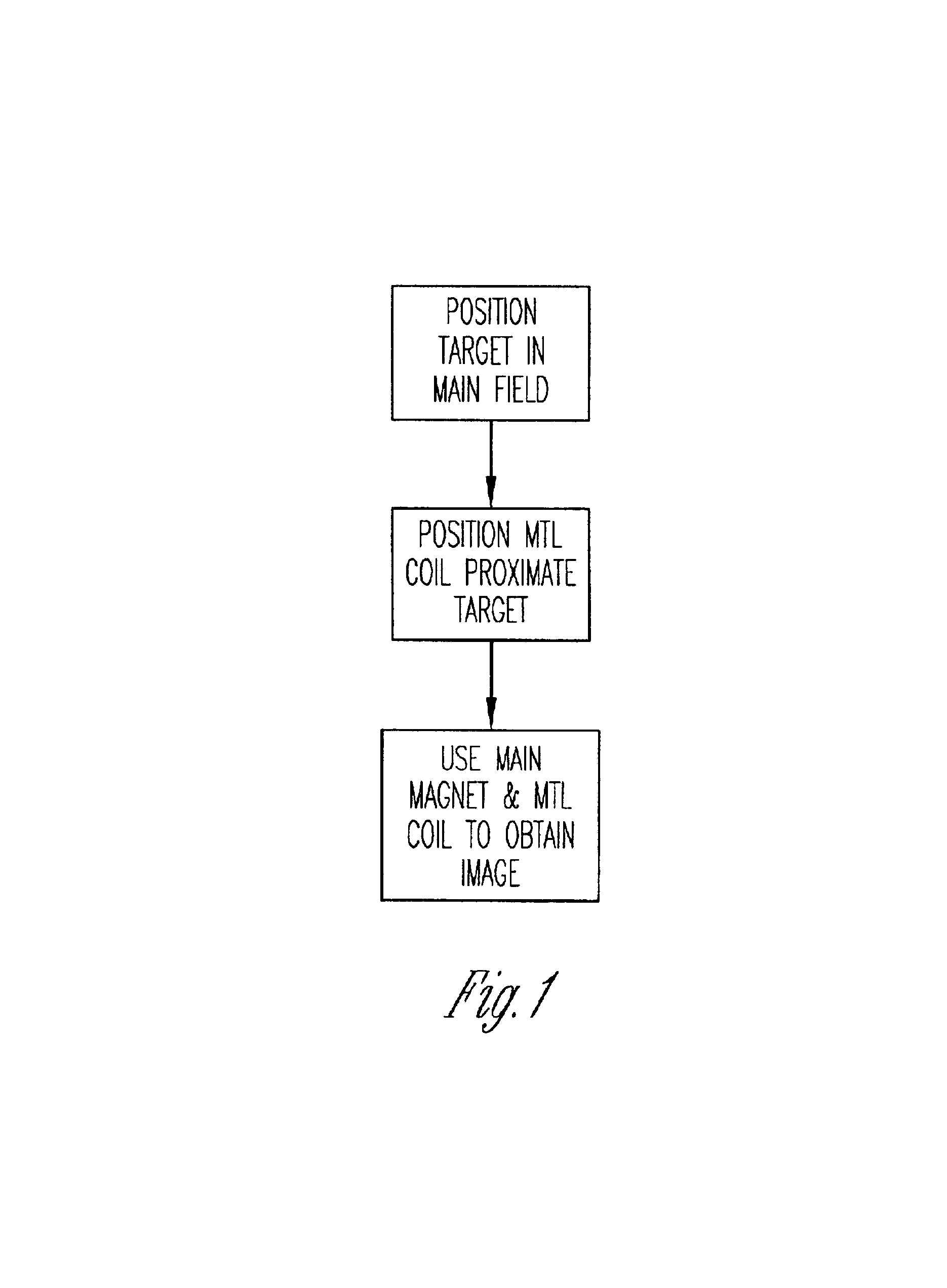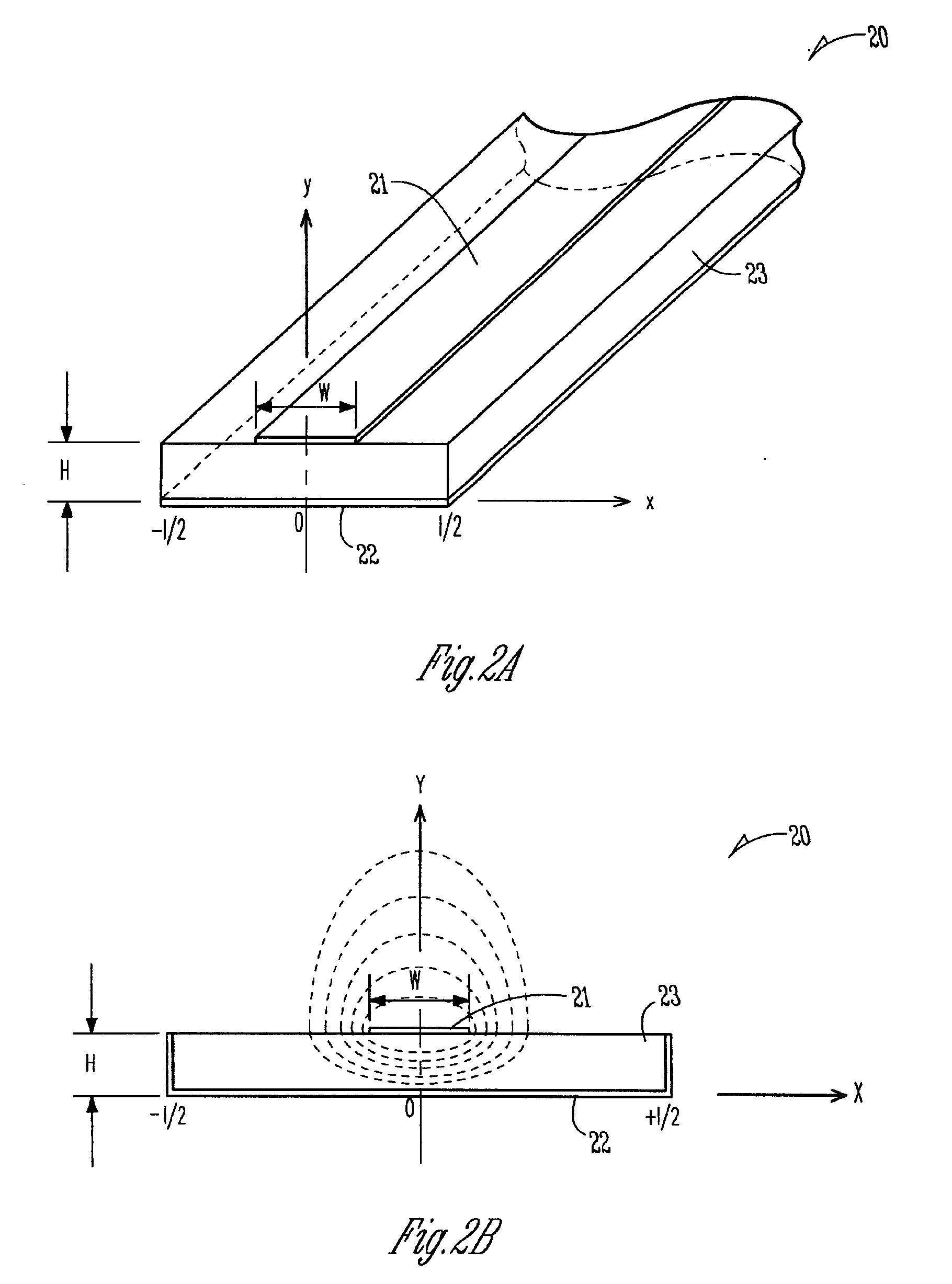Method and apparatus for magnetic resonance imaging and spectroscopy using microstrip transmission line coils
a transmission line coil and magnetic resonance imaging technology, applied in the field of magnetic resonance imaging (mri), can solve the problems of reducing the quality factor or q factor of the coil, the volume inside the main magnet of many mri systems is relatively small, and the coil is not easy to operate in addition to the patient, so as to achieve low cost components, compact design, and easy manufacturing
- Summary
- Abstract
- Description
- Claims
- Application Information
AI Technical Summary
Benefits of technology
Problems solved by technology
Method used
Image
Examples
first embodiment
[0021]According to the apparatus of the invention, as illustrated in FIGS. 2C and 2D, there is provided a single turn MRI imaging or spectroscopy MTL coil 23 constructed using at least one microstrip transmission line. The microstrip transmission line coil, according to one example design, is formed of a strip conductor 24, a ground plane 25 and a substrate 26 made of a dielectric material that may be air, a vacuum, a single or multilayer low loss dielectric sheets such as Teflon or Duroid materials, or liquid Helium or Nitrogen. According to one example embodiment, such coil is 9 cm×9 cm, has a substrate 26 that is 5-7 mm, uses copper foil 36 microns in thickness (for example an adhesive-backed copper tape such as is available from 3M Corporation of St. Paul, Minn.) for the strip conductors and ground plane, and has a resonant frequency of 300 MHz. According to one example embodiment, the MRI signal intensity is proportional to H when H1 penetration in air. If H is too small, or W / ...
embodiment 60
[0025]In still another example embodiment illustrated in FIGS. 5A and 5B, the MTL coil 50 includes a bisected ground plane 52. In this configuration, tuning of the resonance frequency is accomplished by adjusting displacement 54 of at least one of the ground planes. As illustrated in FIG. 6, in yet another embodiment 60, PIN diodes 64 are positioned in the gap 66 of the bisected ground planes 62, and used to detune the coil.
[0026]According to still other example embodiments of the apparatus of the invention illustrated in FIG. 7A, a MTL coil 70 is tuned by varying capacitive termination elements 72 on one end of the coil. FIG. 7B illustrates a hypothetical plot of magnetic field profile vs. capacitive termination value for a range of capacitances. As illustrated, increasing capacitive termination raises the magnetic field profile at the end of the coil at which the termination is applied. FIGS. 7C and 7D illustrate an example embodiment and field profile for tuning a MTL coil 74 by ...
PUM
| Property | Measurement | Unit |
|---|---|---|
| resonant frequency | aaaaa | aaaaa |
| thickness | aaaaa | aaaaa |
| thickness | aaaaa | aaaaa |
Abstract
Description
Claims
Application Information
 Login to View More
Login to View More - R&D
- Intellectual Property
- Life Sciences
- Materials
- Tech Scout
- Unparalleled Data Quality
- Higher Quality Content
- 60% Fewer Hallucinations
Browse by: Latest US Patents, China's latest patents, Technical Efficacy Thesaurus, Application Domain, Technology Topic, Popular Technical Reports.
© 2025 PatSnap. All rights reserved.Legal|Privacy policy|Modern Slavery Act Transparency Statement|Sitemap|About US| Contact US: help@patsnap.com



